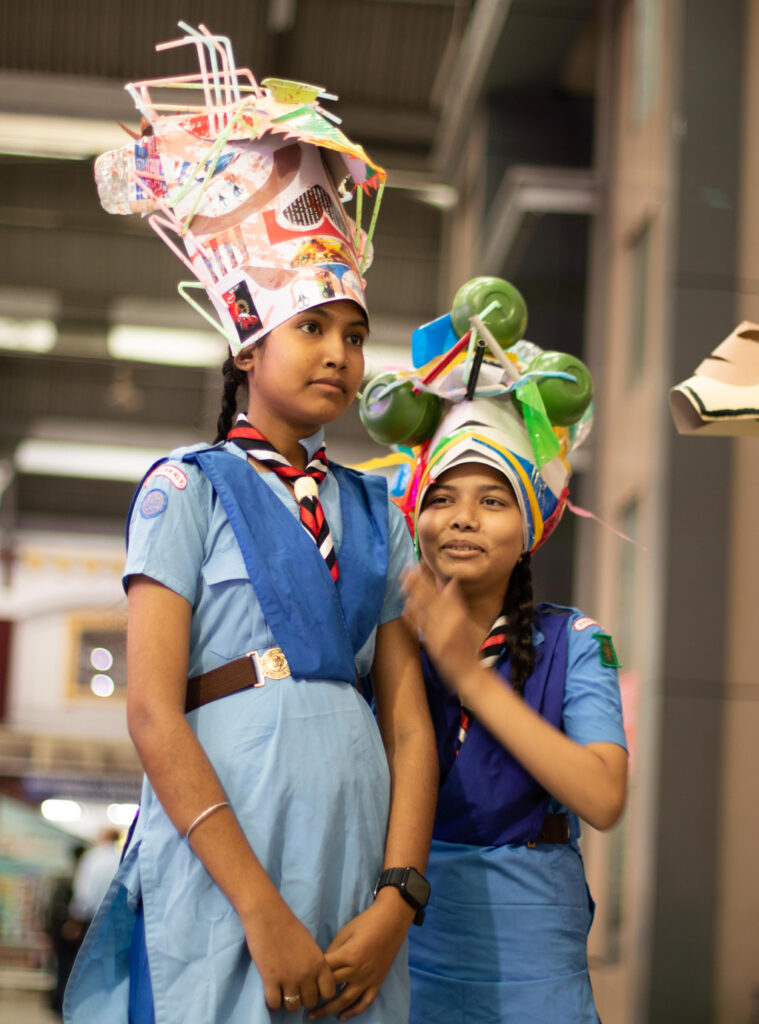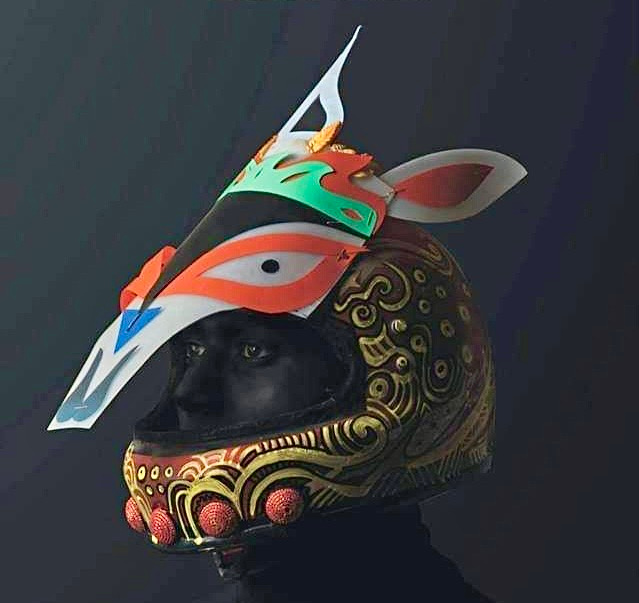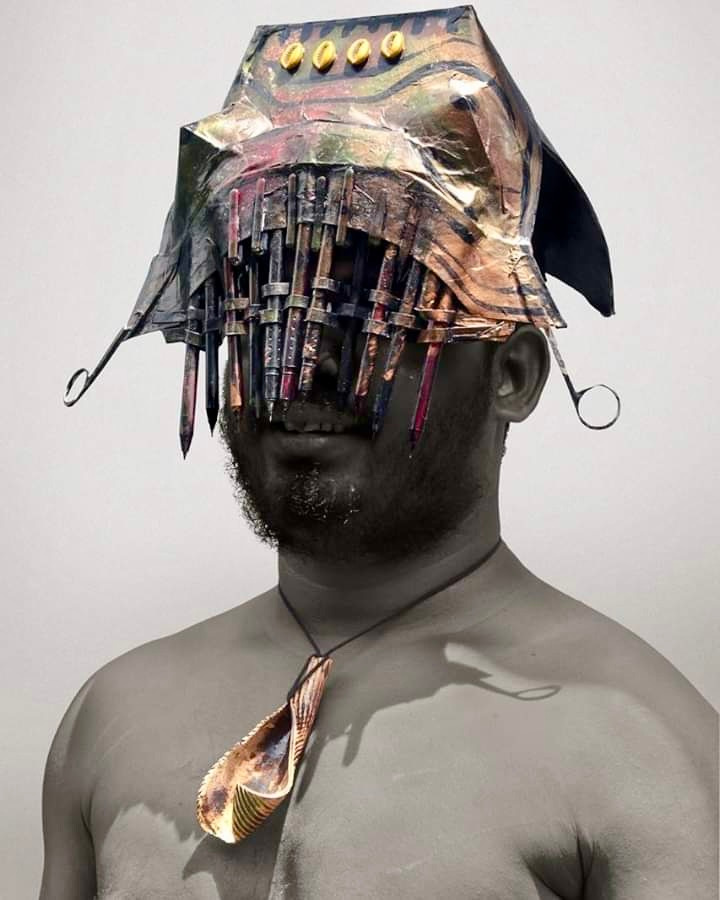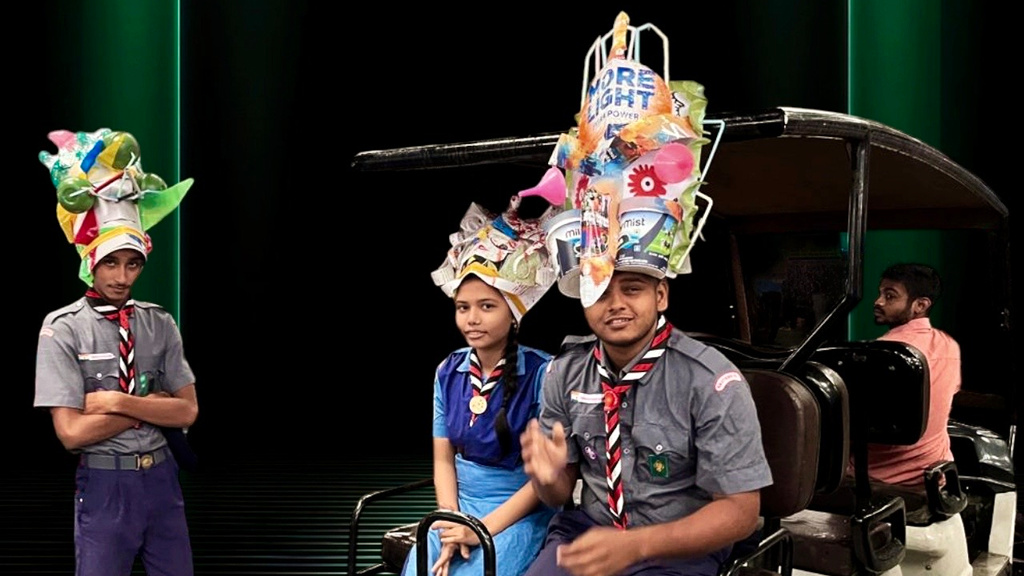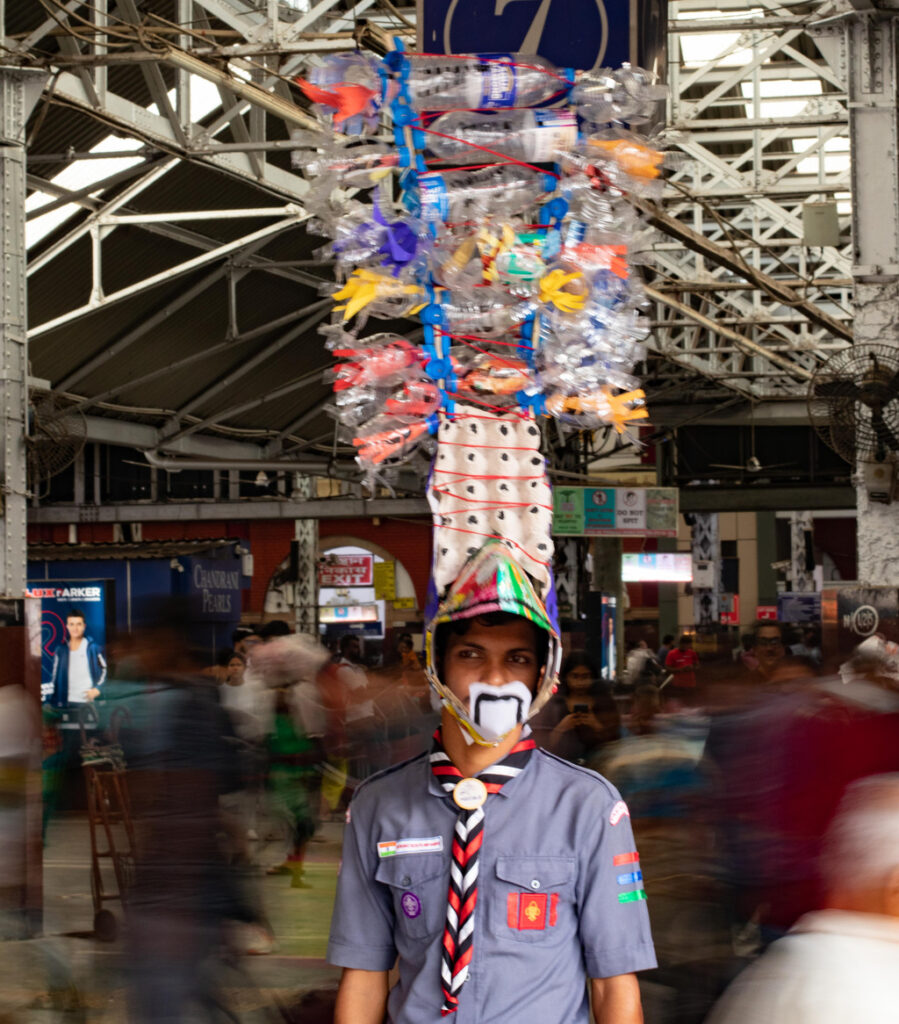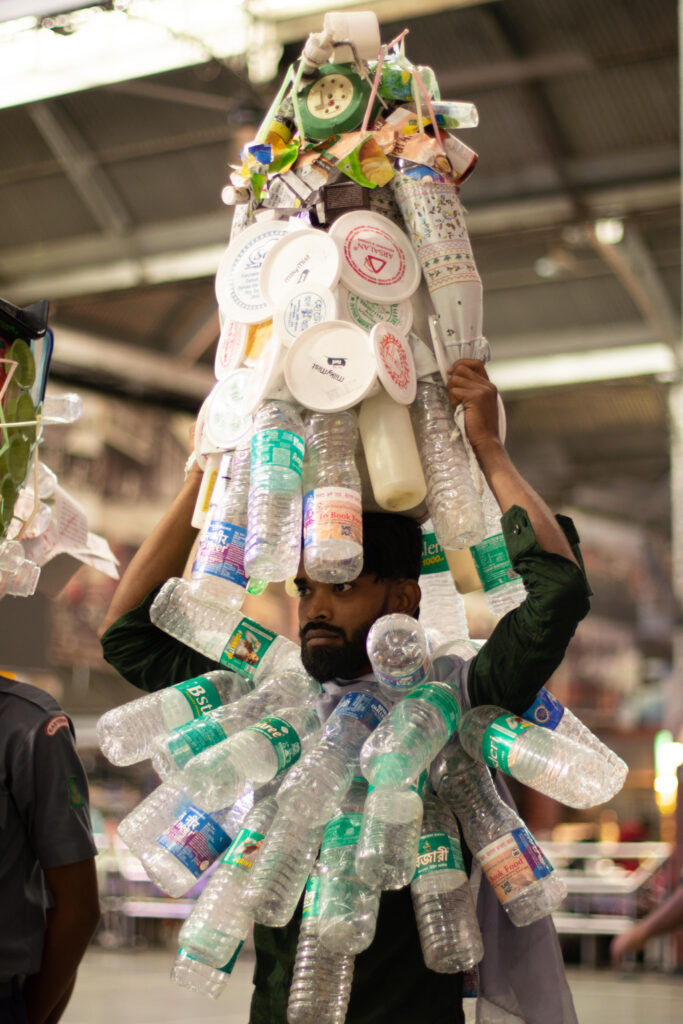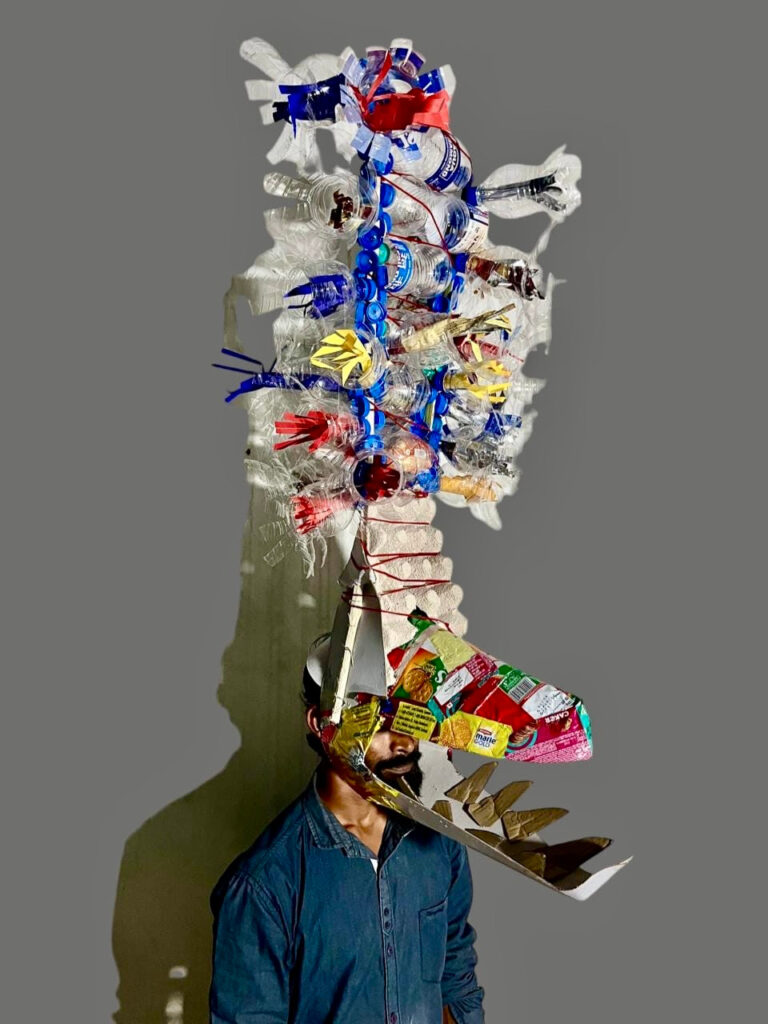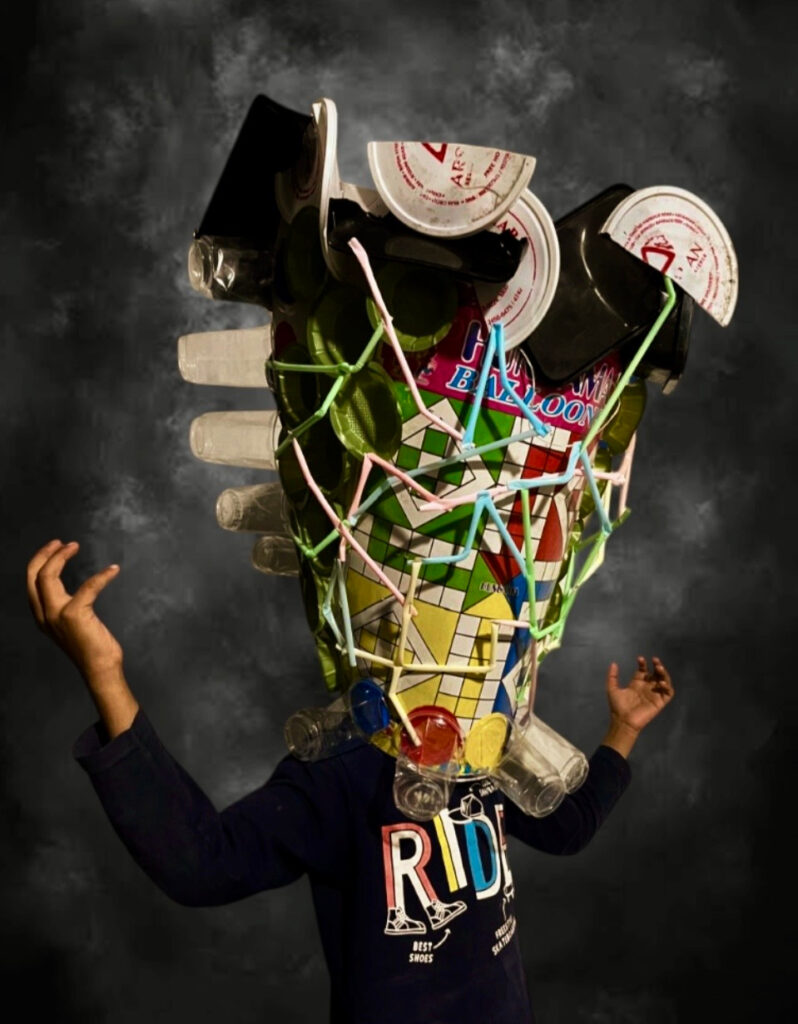
Arpita Bhattacharya describes the artistic evolution of Tamal Bhattacharya, whose work reflects a commitment to storytelling for a better world.
Six years ago, Tamal Bhattacharya collaborated with Indian scenographer Swarup Dutta to create headgear from everyday utensils, helmets, and paperboard. This year, he has again created headgear, but this time using discarded materials like plastic bottles, cardboard, teacups, and plastic packets. This effort focuses on sustainability and environmental awareness, transforming trash into art or wearable items.
This project is part of an initiative by Garbage Free India, which conducted a public awareness campaign about responsible civic behaviour at Howrah Station on March 22, 2025. The campaign aims to inspire citizens to take pride in and maintain a clean, healthy, and garbage-free environment, city, and country. They are very grateful for the artist’s collaboration, which demonstrates the powerful role art plays in raising awareness. According to Garbage Free India, these headgears made from waste symbolise the burden of waste we carry, our excessive consumption, and how poor waste management is destroying nature’s beauty. They believe we need to rethink our habits urgently.
Tamal created these pieces at Studio Calyx Kolkata. As a co-owner of the studio, I feel extremely fortunate to observe the artist at work, as I strongly believe that artists help us see, notice, and perceive things in new ways. We can understand their creativity simply by observing it, much like students in the Gurukul system learned from their teachers.
The unconventional presentation of his works—the headgears and installations—represents blending and movement, not separation. They speak to human suffering and the environment, highlighting the truth that plastic has become a heavy burden. These headgears perfectly combine power and grace. By paying attention to their forms, shapes, and breaks—their vertical and horizontal flow—we can understand their deeper message.
Tamal conceptualised these works entirely in his mind before creating them directly by hand, sewing and sticking effortlessly. His headgears demonstrate an experimental approach to art and have the ability to tell a story, reflecting personal and artistic experiences. He believes that art needs to connect with a wide audience. While individual interpretations may vary based on perception, it is crucial that his art is accessible to a diverse range of viewers.
When railway scouts walked the Howrah Platform in West Bengal, India, on March 22nd, many people became aware of both the devastating effects of plastic and the aesthetic possibilities of art. Viewers may feel comfortable experiencing these creations—the performers—and the plastics themselves.
To me, his creations are interesting, disarming, witty, and eccentric, among many other qualities.
Arpita Bhattacharya Studio is director of Calyx Kolkata. Follow @arpita0128.

